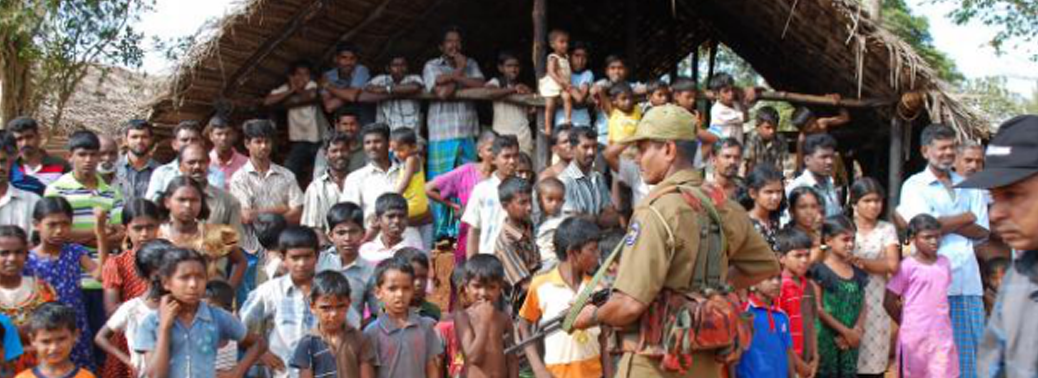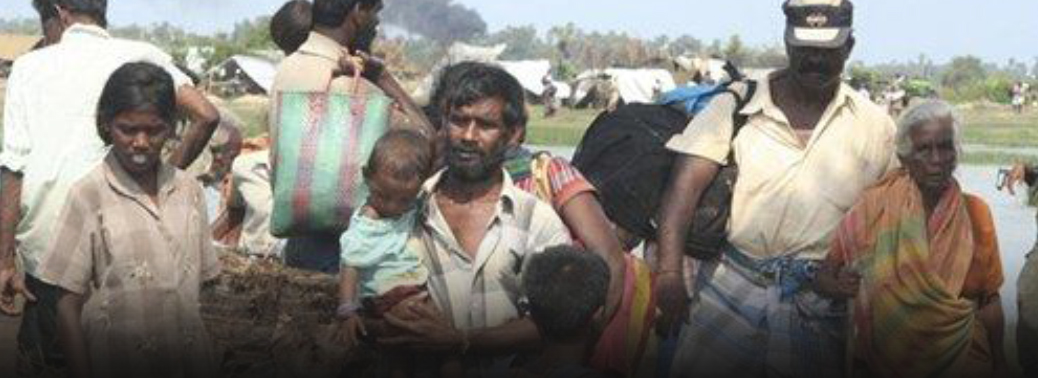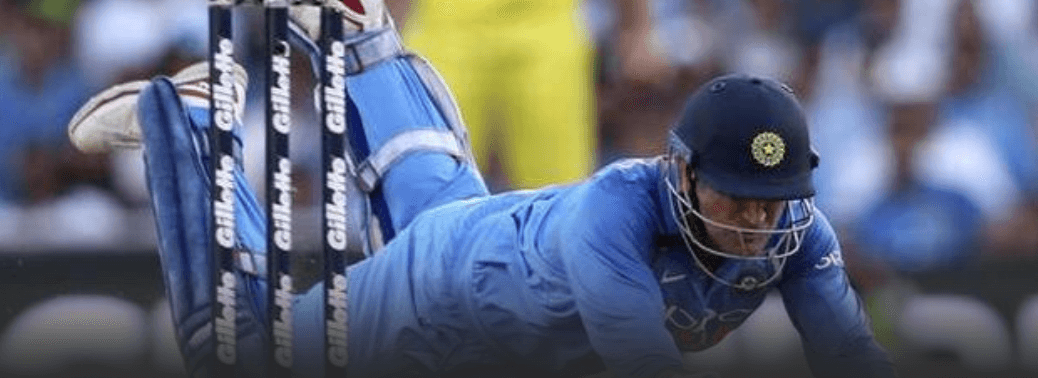Category: India and Srilanka
TAMILS OF SRI LANKA
11, Feb 2020

Context:
- During the Sri Lankan Prime Minister Rajapaksa’s visit to India, Indian Prime Minister used the occasion to raise India’s concerns about the incomplete process of reconciliation and the devolution of powers to Sri Lanka’s Tamil minority.
India – Sri Lanka Relations:
- The relationship between India and Sri Lanka is more than 2,500 years old.
- Both countries have a legacy of intellectual, cultural, religious and linguistic interaction.
- In recent years, the relationship has been marked by close contacts at all levels.
- The progress in implementation of developmental assistance projects for Internally Displaced Persons (IDPs) and disadvantaged sections of the population in Sri Lanka has been the core issue between the two countries.
- The nearly three-decade long armed conflict between Sri Lankan forces and the LTTE came to an end in May 2009.
- During the course of the conflict, India supported the right of the Government of Sri Lanka to act against rebel forces.
- At the same time, it conveyed its deep concern at the plight of the civilian population, emphasizing that their rights and welfare should not get enmeshed in hostilities against the LTTE.
- India’s consistent position is in favour of a negotiated political settlement, which is acceptable to all communities within the framework of a united Sri Lanka and which is consistent with democracy, pluralism and respect for humTamils and Sinhalese are the two major ethnic groups in Sri Lanka.
What are the causes of the Sri Lankan Civil War?
- Sinhalese eternal conflict with Tamils for power had been gathering strength since before its independence.
- Under the Colonial rule, many Tamils attended English language schools which were the passport to higher education and better employment.
- And the Tamil-dominated Northern Province had comparatively better facilities in terms of education and employment.
- Post-independence Sinhalese nationalism sought to curb the Tamil presence in education and civil administration.
- In 1949 Indian Tamil plantation workers disenfranchised, the start of a wave of Sinhalese nationalism which alienated the Tamil people in the region.
- The passing of the infamous “Sinhalese Only Bill” in 1956 was another attempt in the same lines.
- The constitutional provisions in the 1972 Constitution favoring the Sinhalese language and Buddhist religion, along with their educational policies convinced many Tamils that they had been perceived as a marginal community.
- As a result of open discrimination, in 1976 Liberation Tigers of Tamil Eelam (LTTE) was formed to fight for Tamil rights and in 1983 Civil war started.
What is the relation between LTTE and India’s involvement in the Civil War?
- The LTTE was founded in 1976 by Velupillai Prabhakaran with the goal of creating an independent Tamil Eelam out of Sri Lanka.
- From clashes with the Sri Lankan military, the LTTE in the early 80s launched a full scale nationalist insurgency in the north and east of the country, carrying out a string of major terrorist attacks against both military and civilian targets.
- India’s relationship with the LTTE was complex — from providing support to the guerrillas initially to sending the Indian Peacekeeping Force (IPKF) to Sri Lanka from 1987 to 1990.
- The LTTE pioneered suicide bombing as a weapon of terror, and in 1991, an LTTE suicide bomber killed Rajiv Gandhi in an attack on Indian soil.
- Among the other high-profile assassinations carried out by the Tamil Tigers was that of the Sri Lankan President Ranasinghe Premadasa in 1993.
- The LTTE, which used women and children in combat, controlled, at its peak, over three-quarters of Sri Lanka’s northern and eastern provinces.
- The organisation was finally crushed in a ruthless military offensive by the government of President Mahinda Rajapaksa in 2009.
- The LTTE was designated as a terrorist organisation by 32 countries, including, besides India, the United States, Canada, and the European Union.
- The US designated the LTTE as a Foreign Terrorist Organisation (FTO) in 1997.
- India first banned the LTTE after the assassination of Rajiv Gandhi; the ban was last extended for five years in 2014.
What is the role of India in the Sri Lankan Civil War?
- The bilateral relations between India and Sri Lanka deteriorated in 1980’s with the rise of the Tamil militant separatism in Sri Lanka.
- In 1987 with the objective of improving ties, the Indo-Sri Lankan Accord was signed between India and Sri Lanka.
- It proposed a political solution to Sri Lanka’s conflict by establishing a provincial council system and devolution of power for nine provinces in Sri Lanka – The Thirteenth Amendment (13A) to the Constitution of Sri Lanka
- India also deployed Indian Peace Keeping Force in Sri Lanka intended to perform a peacekeeping – Operation Pawan.
- The effect of which ultimately resulted in the assassination of PM Rajiv Gandhi.
- After two years of constant military engagement, the IPKF was withdrawn as it failed to defeat LTTE.
- Finally, in 2009, 25 years of violence ended when the Sri Lankan government seized the last area controlled by Tamil Tiger rebels.
- India at that point agreed to reconstruct the war-torn areas and started many rehabilitation programs.
- However, the pro-LTTE governments in Tamil Nadu influenced the decisions of the Central Government which posed a roadblock in humanitarian assistance in Sri Lanka.
- Also, the relationship started deteriorating when India voted against Sri Lanka in 2009, 2012 and 2013 at the US-sponsored UNHRC resolution to investigate alleged human rights violations by the state against the Tamil rebels.
What is 13A and how does it affect the socio-political landscape of Sri Lanka?
- In 1987, Indian Prime Minister Rajiv Gandhi and Sri Lankan President J.R. Jayewardene signed the Indo Sri Lanka Peace Accord to resolve the civil war.
- Under the terms of the agreement, Colombo had to devolve power to the provinces – including northern provinces, while LTTE had to surrender the arms.
- But LITE was not a party to this agreement. Initially, they accepted it but then later said that they would continue their struggle.
- Before this peace accord, enactment of the sixth amendment of the Sri Lankan Constitution in August 1983 had classified all separatist movements as unconstitutional. In the Indo-Sri Lankan Peace accord the Sri Lankan Government made a number of concessions to Tamil demands, which included
- Devolution of power to the provinces.
- Merger (subject to later referendum) of the northern and eastern provinces.
- Official status for the Tamil language.
- The Thirteenth Amendment (13A) to the Constitution of Sri Lanka:
- The provisions for setting up of a Provincial Council for each Province;
- Establishment of a High Court for each Province;
- Making Tamil an official language and English the link language.
- Provincial councils are to directly elected for five 5 year terms.
- The leader of the council majority serves as the province’s Chief Minister with a board of ministers; a provincial governor is appointed by the president.
- Thus, the 13thamendment, sought to grant regional autonomy as a political solution.
- However, even after several years of decimation of the LTTE, the ethnic reconciliation remains a distant dream in Sri Lanka.
- Indian government has reiterated several times that Sri Lanka needs to complete the process of devolution of power to provinces by implementing its constitution’s 13th Amendment. However, the political will of the Sri Lankan governments have kept the issues of Tamils at bay.
TEN YEARS ON: ON END OF SRI LANKA CIVIL WAR
20, May 2019

Why in news
- Sri Lanka completes 10 years since the brutal and decisive war against Tamil militants
Details:
- It must be acknowledged that the country has not achieved much tangible progress towards ethnic reconciliation, accountability for war-time excesses and constitutional reform that includes a political solution The pervasive grievances of the Tamil minority remain.
- Some progress has been made in resettlement and rehabilitation, but complaints abound. Preliminary steps were taken towards forging a new Constitution, but the process seems to be at a standstill.
- The creation of an ‘Office on Missing Persons’ has not inspired enough confidence.
- There is no mechanism to secure justice for those massacred in the closing stages of the war.
- The year 2015 brought to power a new regime, a fresh promise of democratic governance, and the infusion of a spirit of political and constitutional reform
The Easter Sunday bombings
- However, a month ago everything changed. The Easter Sunday bombings have taken the country back to the time when terrorism was the dominant theme.
- There is no real ‘underlying cause’ to address; no group or organisation to talk to; and no
- tangible political grievances to redress.
- The serial blasts, executed by fanatical elements apparently inspired by the Islamic State, may be a flashpoint for a fresh round of inter-ethnic and inter-religious tension.
- Anti-terrorism laws and emergency regulations are back in full measure
- The biggest adverse fallout is that a new dimension has been given to inter-ethnic suspicions that may deepen distrust among communities.
- When tensions persist among communities, nothing can make up for the absence of reconciliation and trust among all sections. Never has Sri Lanka needed a shared sense of nationhood among all its peoples more than it does now.
From recent evidences, South Asia, a fertile ground for ISIS:
- It’s evident from its actions that the ISIS leadership has seen South Asia as a fertile ground for the organisation.
- The history of jihadist insurgency, high Muslim population and growing tensions between communities may all have prompted the group to focus on the region in its quest for expansion. Despite large-scale military setbacks at the core, ISIS still remains a global terrorist force.
- In Afghanistan, ISIS members and sympathisers have already set up a Wilayat called the Islamic State of Iraq and the Levant Khorasan Province in the eastern Nangarhar province. The group has carried out several suicide attacks, mainly targeting Shias in the already troubled country. It’s from Khorasan that ISIS is handling its South Asia operations, including in India, Pakistan and Bangladesh.
- ISIS hasn’t carried out any major terror attack in India, nor does the group have any
- organisational presence in the country. But it has lured dozens of Indians into its fold.
SRI LANKA BLASTS ACCUSED WAS ON RADAR OF INDIAN AGENCIES
15, May 2019

Why in News?
- A key accused in the recent serial blasts in Sri Lanka, Aadhil AX, was reportedly under surveillance by Indian agencies including Gujarat’s Anti-Terrorist Squad (ATS), following the arrest of two Islamic State (IS) suspects Ubed Mirza and Kasim Stimberwala. The arrested persons were allegedly in touch with Aadhil via WhatsApp.
Details:
- .
Both Mirza and Stimberwala were arrested by the Gujarat ATS and are in judicial custody in Surat. They have been charge-sheeted by the National Investigation Agency (NIA), which accused them of plotting a lone wolf attack in Ahmedabad. Mirza is a lawyer while Stimberwala is a medical technician. As per the charge sheet filed by the NIA, Mirza, in 2017, had a WhatsApp chat with Aadhil, who is believed to be the same person involved in the Sri Lanka serial blasts, in which more than 250 people were killed. - The charge sheet also mentions the messages and chats between Mirza and Aadhil through social media.
- After the 26/11 attacks, Government felt the need to setup a separate body to deal with terrorism. NCTC is modelled on the American NCTC and Britain’s Joint Terrorism Analysis Centre. NCTC will derive its powers from the Unlawful Activities Prevention Act, 1967
- The basic idea is to prevent confusion regarding intelligence inputs and also ensure that none of the police forces from the states enter into a blame game regarding intelligence sharing as one got to see during the 26/11 attacks in Mumbai.
- It will have the power to conduct searches and arrests in any part of India. will collect, collate and disseminate data on terrorism. will also maintain a data base on terrorist and their associates including their families.
- In short, NCTC will serve as a single and effective point of control and coordination of all counter terrorism measures.
- • Multi-Agency Centre (MAC)
- • It is platform to share varied intelligence inputs coming from various agencies like the
- • Directorate of Revenue Intelligence (DRI),
- • Economic Intelligence Agency,
- • Enforcement Directorate etc. –
- • Earlier this MAC was under Intelligence Bureau under Home Ministry.
- • But in future, the MAC will be placed under the NCTC.
- USA’s NCTC which deals only with strategic planning and integration of intelligence without any operational involvement
- UK ‘s Joint Terrorism Analysis Centre, which too plays a purely coordinating role.
- But the Indian NCTC will have not only intelligence functions but also powers to conduct operations, raids and arrests in any part of India.
- NCTC was to start working from March 2012, but it couldnot be launched due to opposition from a group of Non-Congress chief ministers who say that NCTC is against the federal structure of the country. Power to Arrest without informing State Government
- Non-Congress chief ministers allege that the NCTC has been empowered to search and arrest people without informing the state government, police or anti-terror squad in the loop. Take this scenario for example. A suspected terrorist is holed up in a state. The officials of the NCTC would have the right to enter into that state and pick him or her up without informing the state machinery and deal with him under their laws.
- The role of the state becomes redundant with such powers and states would have no say or role to play in the fight against terrorism. This would have a bearing on the rights and privileges of the states as enshrined in the Constitution.
-
To curb this fear, Home Ministry had altered the rules. Now, the senior most police officers in all states – the Director Generals of Police and the chiefs of anti-terror squads of all states
will be members of the Standing Council of the NCTC. They will be informed before the NCTC conducts an operation in their state.
- And Home Ministry had also assured the State Governments that NCTC will now be able to carry out anti-terror operations only in the rarest of rare cases.
- National Investigating Agency (NIA) was established after the 26/11 attacks.
- So, the establishment of a new NCTC would only add to the bureaucratic tangle in intelligence sharing and counter terrorist action.
- However, Chindu had assured that NIA is merely a predecessor of NCTC. (so once NCTC comes into operation, the NIA will function under it or will be submerged into NCTC)
- After Pranab become President, Chindu became Finance Minister and thus Shinde became the Home Minister. But Shinde, in his first public speech, did not mention National Counter Terrorism Centre (NCTC) or National Intelligence Grid (NATGRID).
- That means, Home Ministry has put the idea in back-burner for now.
National Counter Terrorism Center (NCTC)
What will NCTC do?
How is it different from US and UK model?
What is the problem with NCTC?
Overlapping with NIA:
Present Status of NCTC:
INDIA, AUSTRALIA TO ADOPT CLASSIFIED COMMUNICATIONS
12, May 2019

Why in News:
-
Australian Navy is, at present, “hanging off” COMCASA — India’s secure communications
agreement with the U.S. — Australia
Background:
- India moving to classified communications environment that one would see, for instance, in the Combined Task Force 150, 151 and 152 operations, where there’s a bunch of like- minded countries that have a communications system that is operating at the classified level, to be able to allow them to talk together.
Relation between India and Australia:
- The establishment of India-Australia Joint Ministerial Commission (JMC) in 1989 encouraged dialogue at a government and business level on multiple issues of trade and investment.
- India-Australia CEO Forum is a significant mechanism through which business leaders from both nations engage in mutually fruitful dialogue to enhance bilateral trade and investment relationship. The Forum consists of heads of Indian and Australian business from multiple sectors like energy and resources, agri-business, financial sector, telecommunications, IT, education and pharmaceuticals. The last meeting of the Forum was held in New Delhi on 29th August 2017.
- The city of Canberra, Australia hosted the seventh India-Australia Economic Policy Dialogue during 16-18 July 2017.
- India s main exports to Australia are passenger motor vehicle and machinery, pearls, gems and jewellery, medicaments (including veterinary) and refined petroleum products.
- India s major imports from Australia are coal, non-monetary gold, copper, wool, fertilizers, wheat, vegetables and education-related services.
- In 2016, India s trade in goods and services with Australia was about US$ 15.6 billion. In 2016, India s export to Australia was about US$4.6 billion.
- In 2016, India s import from Australia was about US$11 billion.
- The two countries are also involved in the RCEP (Regional Comprehensive Economic Partnership) negotiations.
- Indian companies have invested in Australian mining sector successfully.
- India is the fifth largest export market for Australia and tenth largest trading partner overall.






